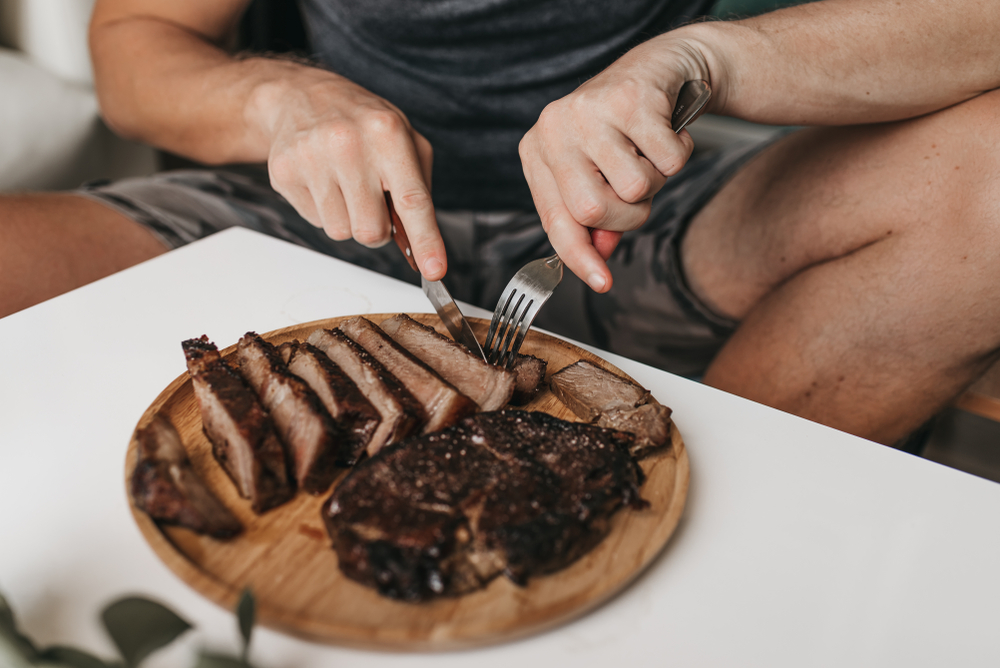The trend nowadays that most bodybuilders follow is the “if it fits your macros” mentality, which essentially says that as long as you have all of your daily macro needs covered, nothing else matters.
This trend says that you shouldn’t care about timing or distribution. It also doesn’t take into account the fact that there’s an actual human being consuming these macronutrients who might feel hungry throughout the day due to this mentality–and might actually reduce their gains by taking this route.
We’ve conducted a study on vitamin E that confirmed a lot of what you see in the overall American population statistics and even the studies. On average, people in the study consumed 90g of protein a day. This is the average amount of protein consumed daily in our society. It’s not really much, but it’s even more telling how people distributed that protein.
What Is the Average Person’s Protein Distribution?
A typical American routine is to wake up in the morning and have a cereal like Frosted Flakes with milk. In total, this comes to around 10g of protein for breakfast. After that, they might grab a chicken or turkey sandwich containing around 20g of protein on their way to work.
For dinner, they might have a burger or go to a steakhouse and eat around 60g of protein, for a total of 90g of protein during the day. And if their goal was to get 90g of protein a day and they were following the “if it fits your macros” approach, they’d be fine and dandy, wouldn’t they?
Well, that’s false, and we’re about to tell you why.

Why Do You Need to Distribute Your Protein?
How you distribute your proteins throughout the day matters, and that’s because we have something called a protein threshold. We need to consume around 25-35g of protein to hit that threshold.
You might notice some problems with the distribution we described above based on this idea. If we follow the previously mentioned routine, we won’t be hitting that threshold during lunch or breakfast, and we won’t be able to lose fat and build muscle.

The only time we would be able to hit that threshold would be during dinner, which isn’t as healthy. There are multiple studies done that look at protein distribution and how it can affect muscle gain.
A study conducted by Dr. Donald Layman and the late Patton Jones took individuals and had them consume protein one day with a skewed protein distribution like the routine we just mentioned, during which they consumed 10g-20g-60g of protein throughout the day.
Another day, they had them take protein in a more even distribution of 30g-30g-30g, morning-afternoon-night. What they found was that the total muscle built during the evenly distributed protein day was 25% higher than when they had a skewed protein intake.
What this means is that first of all, the “if it fits your macros” mentality is false, and it might actually affect your gains. Second of all, equally distributing your protein intake throughout the day is extremely important. This means you’ll want to enhance your protein synthesis by taking essential amino acids (EAAs) between your meals.
We hope this article helped you understand the importance of distributing your protein intake throughout the day in order to maximize your gains.









